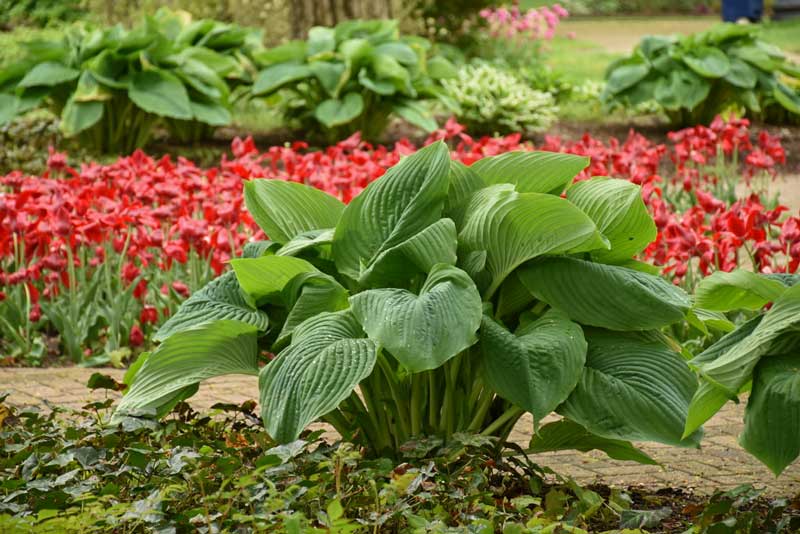Hosta is virtually carefree and comes back reliably year after year. Hardy in USDA zones 3-9, this tough plant performs well in most landscapes, even for beginning gardeners.
Foliage occurs in shades of green, blue, white, gold, chartreuse and variegated patterns. Pointed leaves are heart-shaped or elongated, with smooth, pleated or wavy texture that creates depth in the landscape. Flower scapes appear in summer, bearing clusters of trumpet-shaped blooms in hues of white, pink, lavender or purple, with some varieties being fragrant.
These versatile plants are widely useful when massed in a border or along a slope, as a foundation planting or stand-alone accent, in containers, or when combined with other woodland plants. With hundreds of varieties to choose from, you’re sure to find a hosta that suits your personal taste and style.
PLANTING & CARING FOR HOSTA
How to plant: Follow these steps to plant hosta in spring or fall, leaving enough space between plants to accommodate their mature width.
- Loosen the soil in the planting area to a depth slightly deeper and twice as wide as the root ball.
- Mix in compost or other rich organic matter.
- Dig a hole large enough to accommodate the root ball.
- Remove the plant from the nursery pot and tease out roots if potbound.
- Set the plant in the hole with the top of the root ball level with the surrounding soil.
- Fill in the hole with soil and tamp down gently to remove air pockets. Water well.
- Mulch with a layer of compost or shredded bark to retain moisture and suppress weeds.
Soil: Hosta prefers rich, well-draining soil.
For containers: Use a high-quality all-purpose potting mix. Make sure containers have drainage holes in the bottom. The container should be 4-6 inches wider and slightly deeper than the root ball.
Watering: Keep soil evenly moist, but not soggy, and don’t allow plants to completely dry out.
Fertilizing: In early spring, apply a granular all-purpose time-release fertilizer according to package instructions.
Pruning: Trim off dead or damaged foliage and spent flower stalks as needed. Allow plants to die back completely in the fall and clean up leaf debris.



